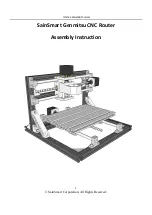
About configuring storage
73
Expanding Storage
You can expand storage by installing additional disk modules in empty disk slots or by
connecting additional Fibre Channel RAID Chassis or Expansion chassis. To use the
additional storage, you must bind the new disk modules and create a new video file
system.
The disk modules you use in a LUN must all have the same capacity to fully use the
modules’ disk space. The same applies to LUNs. Make sure all LUNs have the same
capacity to fully use the LUN’s disk space.
When redeploying an Expansion Chassis that was bound using a PFR500 or PFR600
RAID Controller Chassis, always use the GVG Disk Utility to unbind the disk modules
in the expansion chassis before disconnecting them from the original RAID Controller
chassis. Refer to “Unbinding LUNs for reconfiguration” on page 91.
File system volume name
The video file system volume name is the logical name used when accessing the storage
system. All local and remote Profile XP applications use the volume name when
referencing the video file system.
You can change the video file system volume name at any time without affecting the
media files stored on the system. Changing the volume name may be required with some
third party Profile XP control software which requires a specific volume name.
Using Hot Spare drives
You can bind disks as hot spare drives. Hot spare drives are on standby and are used in
the event of a drive failure in a data LUN. If a drive fails, the RAID Controller
automatically selects a hot spare drive to use in place of the failed drive. This prevents
the system from operating in a degraded state, ensuring there are always 5 disks in the
RAID-3 LUN keeping the data LUN in a protected mode. See “Configuring hot spare
drives” on page 83.
The following table describes how your RAID system will respond when the failed drive
is replaced.
RAID Storage Models
How this system handles the replacement drive
PFC 500
The replacement disk drive module is rebuilt, and the hot spare drive reverts to
“hot spare” status.
PFR 500
The replacement drive becomes a hot spare drive. The original hot spare drive
remains a permanent member of the LUN.
PFR 600
a
a
Since hot spare drives remain members of the LUN, disk modules in a LUN can become physically separated in time.
Before replacing a failed disk module, always use the GVG Disk Utility to physically identify it.
The replacement disk module is in a “free state”. The hot spare drive remains a
member of the LUN. You must use the GVG Disk Utility to bind the
replacement drive as a hot spare drive to make it available.
PFC 700
The replacement disk drive module is rebuilt, and the hot spare drive reverts to
“hot spare” status.
Summary of Contents for PROFILE XP PVS Series
Page 14: ...Preface 14 Profile XP System Guide 23 July 2004 ...
Page 64: ...Chapter 2 Working with Configuration Manager 64 Profile XP System Guide 23 July 2004 ...
Page 130: ...Chapter 4 Adding or Removing Channels 130 Profile XP System Guide 23 July 2004 ...
Page 144: ...Chapter 4 Adding or Removing Channels 144 Profile XP System Guide 23 July 2004 ...
Page 232: ...Chapter 7 Modifying a Channel Timecode Settings 232 Profile XP System Guide 23 July 2004 ...
Page 238: ...Chapter 8 Modifying a Channel Ancillary Data 238 Profile XP System Guide 23 July 2004 ...
Page 246: ...Chapter 9 Managing Optional Licenses 246 Profile XP System Guide 23 July 2004 ...
Page 288: ...Chapter 11 Setting up a Simple Network 288 Profile XP System Guide 23 July 2004 ...
Page 310: ...Chapter 12 Solving Common Setup Problems 310 Profile XP System Guide 23 July 2004 ...
Page 344: ...Chapter C 344 Profile XP System Guide 23 July 2004 ...
















































